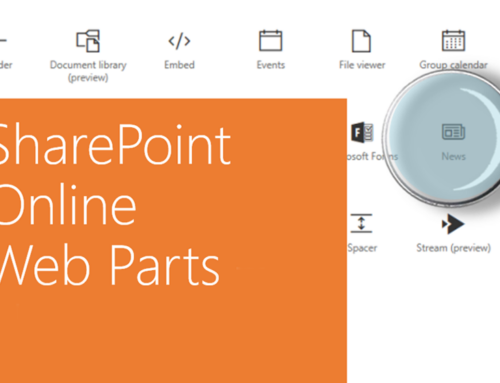Best Practices for Organizing Your Documents in SharePoint
Microsoft 365 | SharePoint

Introduction
Organizing your documents in SharePoint is important for efficient document management. SharePoint offers a variety of features to help you organize your documents, such as document libraries, content types, and custom views. In this blog post, we will cover best practices for organizing your documents in SharePoint to make document management easier and more efficient.
Setting Up Document Libraries
Document libraries are where you store your documents in SharePoint. To make the most of your document libraries, it is important to set them up properly. Here are some best practices for setting up your document libraries:
- Naming conventions: Use consistent naming conventions for your document libraries. This will help you and your team find the document library you need quickly and easily.
- Permissions and access control: Set permissions and access control to ensure that only authorized users have access to the document library. This is particularly important for sensitive or confidential documents.
- Adding columns and metadata: Use columns and metadata to add additional information to your documents, such as author, date created, and keywords. This will make it easier to search for and find documents.
- Using versioning settings: Enable versioning settings to track changes to your documents. This will help you keep track of different versions of your documents and restore previous versions if needed.
Using Content Types
Content types are pre-defined templates for different types of documents. They include pre-defined metadata, document templates, and workflows. Here are some best practices for using content types:
- Standardizing metadata: Use standard metadata across all content types to make it easier to search for and find documents.
- Enforcing document templates: Use document templates to ensure that all documents of a particular type are consistent in format and content.
- Using Power Automate for Workflows: Power Automate is a powerful tool for automating workflows in SharePoint. You can use Power Automate to create custom workflows that control the document approval process, such as requiring approval from a manager before a document is published. Here are some best practices for using Power Automate for workflows in SharePoint:
- Creating custom approval workflows: Use Power Automate to create custom approval workflows that meet the specific needs of your organization.
- Automating document routing: Use Power Automate to automate the process of routing documents to the appropriate individuals or departments for review and approval.
- Tracking and reporting: Use Power Automate to track and report on the status of your workflows, including approvals and rejections.
By using Power Automate for workflows in SharePoint, you can streamline your document management process and improve overall efficiency.
Organizing Documents
Organizing your documents in SharePoint can be done in a number of ways. Here are some best practices for organizing your documents in SharePoint:
- Using metadata: Use metadata to categorize your documents, making it easier to find them.
- Creating custom views, including the modern view: Use custom views to filter and sort documents based on specific criteria. The modern view in SharePoint 365 is a great way to create a custom view that is visually appealing and easy to use.
- Using folders and subfolders: Use folders and subfolders to group related documents together.
Searchability and Findability
Searchability and findability are critical for document management. Here are some best practices for improving searchability and findability in SharePoint:
- Using metadata: Use metadata to categorize your documents, making it easier to find them.
- Creating content types: Use content types to standardize metadata and make it easier to search for and find documents.
- Creating custom views, including the modern view: Use custom views to filter and sort documents based on specific criteria. The modern view in SharePoint 365 is a great way to create a custom view that is visually appealing and easy to use.
Versioning and Document Control
Versioning is important for controlling document versions and ensuring that the correct version of a document is being used. Here are some best practices for using versioning in SharePoint:
- Enabling versioning: Enable versioning to track changes to your documents.
- Using major and minor versioning: Use major and minor versioning to differentiate between significant and minor changes.
- Controlling document approval: Use workflows to control the document approval process, such as requiring approval from a manager before a document is published.
Conclusion
Organizing your documents in SharePoint is important for efficient document management. By following these







